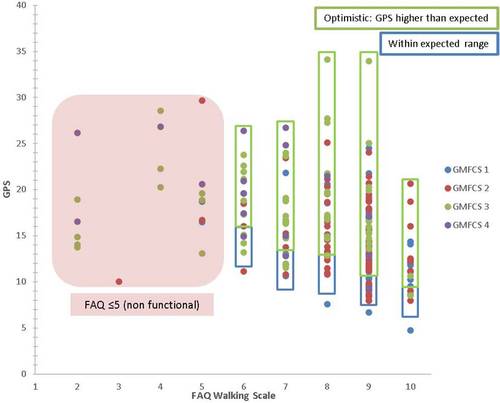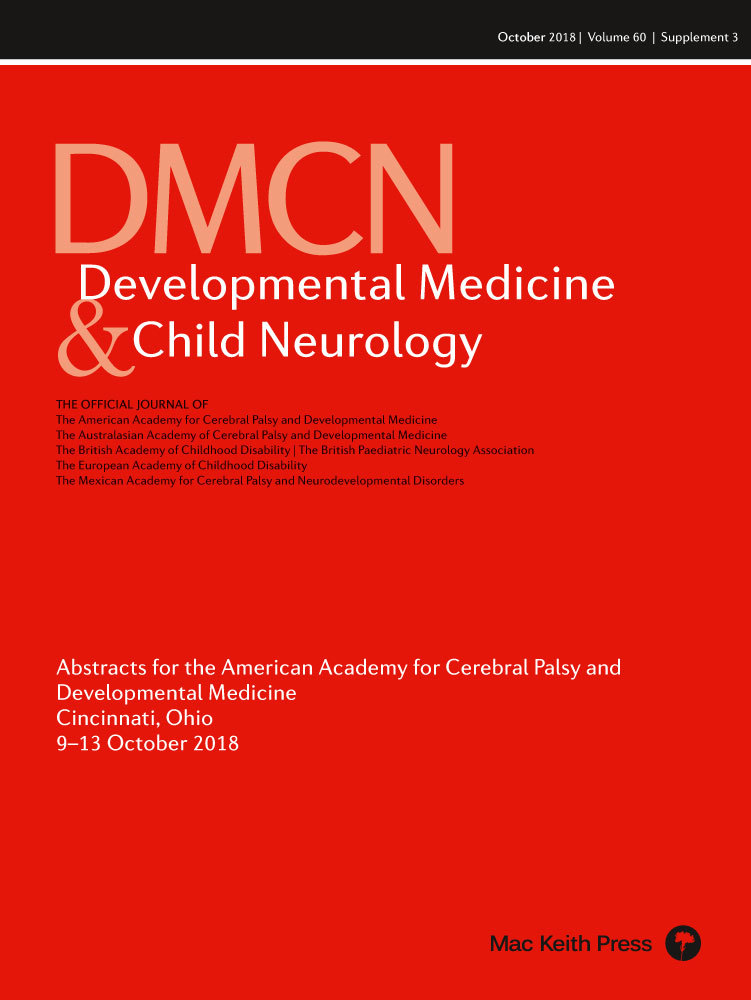Is parent perception of walking ability in children with cerebral palsy appropriately identified on the Gillette functional assessment questionnaire?
G1
A Erdman1, K Jeans1, L Karol1
1Texas Scottish Rite Hospital for Children, Dallas, TX, USA
Background and Objective(s): Within our institution, it has been theorized that less involved children with Cerebral Palsy (CP) (GMFCS 1) tend to be rated poorer by their parents on the Gillette Functional Assessment Questionnaire (FAQ) due to the fact they cannot ambulate as well as their peers while parents of more involved children (GMFCS 3 and 4) are inclined to be more optimistic of their child's abilities. We wanted to determine if parent perception of their child's walking ability as measured with the FAQ corresponded with the child's actual walking ability assessed with the Gait Profile Score (GPS).
Study Design: Retrospective cohort study.
Study Participants & Setting: A total of 205 children with CP (average 13.3, range 6.4 - 18.5) who underwent gait analysis from 2001 to 2017 at a pediatric orthopedic hospital were retrospectively reviewed. Children with hemiplegia were excluded.
Materials/Methods: Kinematic data were collected for the pelvis, hip, knee and ankle and used to compute the overall GPS for each child in order to assess their walking ability. Parents were administered the FAQ at the time of testing and rated their child's walking ability on a scale of 1 (cannot take any steps) to 10 (walks, runs, performs uneven terrain and stairs without difficulty), with scores ≥6 considered as functional walkers. The overall GPS was compared to previously published ranges established for each FAQ walking level to determine the appropriateness of the parent reported FAQ walking level.
Results: Nineteen of the 205 children were rated at a 5 or below on the FAQ walking scale which would not be considered a functional walker. The majority of those rated ≤5 were GMFCS level III and IV's (14 out of 19) and commonly demonstrated diminished walking speed, increased dependence on walking aids and/or unrealistic family goals. Those children who were GMFCS 1 and 2 who were rated ≤5 frequently had unattainable goals for their treatment (i.e. to play basketball, cheer, ride a bike). Of those rated a 6 or above on the FAQ, 23% (range 19–30%) fell within the published ranges of GPS for their selected FAQ level. The majority of children (75%, range 68–79%) had greater gait deviations measured with the GPS than would be expected according to their selected FAQ level, indicating parents rated them better than their actual gait pattern, indicated. Three children were rated lower on the FAQ than indicated by their GPS (for FAQ responses ≥6). Two were GMFCS 1 and both had unrealistic goals including “doing the splits” at the time of testing. The third child (GMFCS 2) was dissatisfied with the lack of improvement in their walking pattern or speed following surgery.
Conclusions/Significance: The majority of parents rated their children more optimistically than their GPS would indicate with only 2% of parents rating their children lower than their GPS indicated (for FAQ ≥6). The FAQ can be a valuable tool for clinicians to identify those families who rate their children at a lower walking level than expected in order to provide additional education to avoid unrealistic goals.





